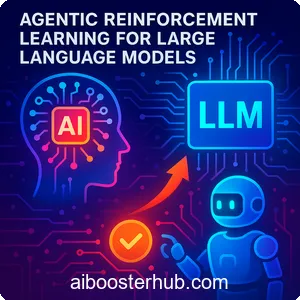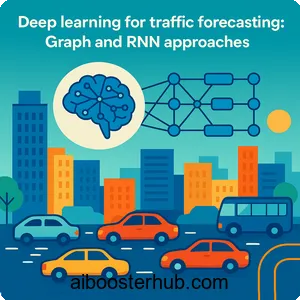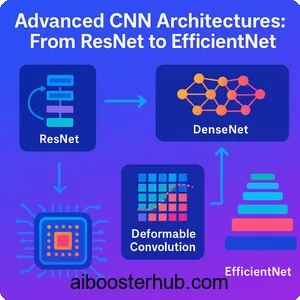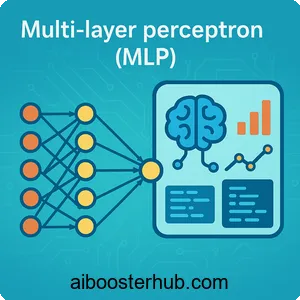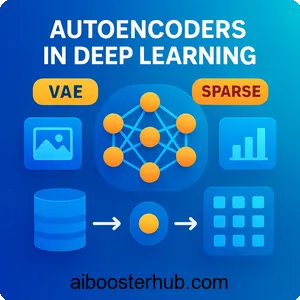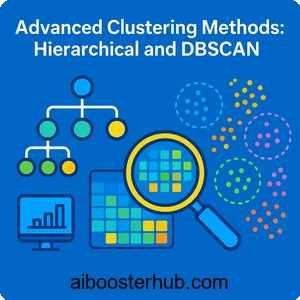Decision Trees in Machine Learning: A Complete Guide
Decision trees stand as one of the most intuitive and powerful algorithms in machine learning, offering a clear path from data to decisions. Whether you’re classifying emails as spam, predicting customer behavior, or diagnosing medical conditions, decision trees provide a transparent, interpretable approach that both beginners and experts can appreciate.
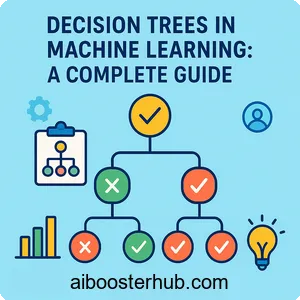
Content
Toggle1. What is a decision tree?
A decision tree is a supervised machine learning algorithm that makes decisions by splitting data into branches based on feature values, much like a flowchart. Imagine you’re deciding whether to play tennis outside: you might first check if it’s raining, then consider the temperature, and finally look at the wind conditions. A decision tree follows this same logical process, creating a tree-like structure where each internal node represents a test on a feature, each branch represents an outcome of that test, and each leaf node represents a final decision or prediction.
The beauty of the decision tree algorithm lies in its interpretability. Unlike black-box models such as neural networks, you can trace exactly how a decision tree arrives at its conclusion by following the path from root to leaf. This transparency makes decision trees particularly valuable in fields like healthcare and finance, where understanding the reasoning behind predictions is just as important as the predictions themselves.
Decision trees can handle both classification tasks (predicting discrete categories) and regression tasks (predicting continuous values). When used for classification, we often refer to them as decision tree classifiers, while regression trees predict numerical outcomes. The fundamental structure remains similar across both applications.
Understanding the tree structure
At the top of every decision tree sits the root node, containing all the training data. As we move down the tree, the algorithm splits this data into increasingly homogeneous subsets. Each split is chosen to maximize the separation between different classes or minimize the variance in target values.
Consider a simple example of classifying whether someone will buy a product based on their age and income. The root node might first split on income level: customers earning above a certain threshold go to the right branch, while those below go left. Each of these branches might then split on age, creating four leaf nodes that represent different customer segments with different purchasing probabilities.
The depth of the tree determines how many questions we ask before making a final prediction. Shallow trees with few levels are simple and generalizable but might miss important patterns. Deep trees can capture complex relationships but risk overfitting to training data, learning noise rather than true patterns.
2. How decision trees work
The decision tree algorithm builds its structure through a process called recursive partitioning. Starting with all training data at the root, the algorithm searches for the best feature and threshold to split the data into two subsets. It then repeats this process recursively for each subset, creating new branches and nodes until reaching a stopping criterion.
Splitting criteria
The key question is: how do we determine the “best” split at each node? Different decision tree implementations use different metrics to evaluate split quality. For classification tasks, the most common criteria are:
Gini impurity measures the probability of incorrectly classifying a randomly chosen element. For a node with classes \( c_1, c_2, …, c_k \) and their probabilities \( p_1, p_2, …, p_k \), the Gini impurity is:
$$ Gini = 1 – \sum_{i=1}^{k} p_i^2 $$
A Gini impurity of 0 indicates a pure node where all samples belong to the same class, while higher values indicate mixed nodes. The decision tree algorithm seeks splits that minimize the weighted average Gini impurity of the resulting child nodes.
Entropy and information gain provide an alternative approach based on information theory. Entropy measures the disorder or unpredictability in a node:
$$ Entropy = -\sum_{i=1}^{k} p_i \log_2(p_i) $$
Information gain calculates the reduction in entropy achieved by splitting on a particular feature. The split that maximizes information gain is chosen at each step.
For regression tasks, decision trees typically use variance reduction or mean squared error as splitting criteria, selecting splits that create subsets with similar target values.
The splitting process
Let’s walk through a concrete example. Suppose we’re building a decision tree classifier to predict if a student will pass an exam based on study hours and previous test scores. Starting at the root with 100 students, the algorithm evaluates all possible splits:
- Should we split on study hours at threshold 3 hours, 4 hours, or 5 hours?
- Should we split on test scores at threshold 60%, 70%, or 80%?
For each potential split, the algorithm calculates the resulting impurity or information gain. Perhaps splitting on “study hours ≥ 4” yields the best results, creating one subset with 40 students who studied less than 4 hours (mostly failing) and another with 60 students who studied 4+ hours (mostly passing).
The algorithm then recursively applies this process to each subset. The left branch (study hours < 4) might split next on test score, while the right branch might split on a different threshold. This continues until we reach stopping conditions like maximum depth, minimum samples per leaf, or pure nodes.
Stopping criteria and pruning
Without constraints, a decision tree could keep splitting until each leaf contains exactly one training sample, perfectly “memorizing” the training data. This leads to overfitting, where the tree performs excellently on training data but poorly on new, unseen data.
To prevent this, we implement stopping criteria such as:
- Maximum depth: limit how many questions we can ask
- Minimum samples per split: require enough data before allowing a split
- Minimum samples per leaf: ensure each prediction is based on sufficient examples
- Maximum leaf nodes: cap the total complexity of the tree
Pruning offers another approach to controlling complexity. After growing a full tree, pruning removes branches that provide little predictive value, simplifying the model while maintaining accuracy.
3. Decision tree in machine learning applications
Decision trees excel in numerous machine learning scenarios due to their flexibility and interpretability. Their ability to handle both numerical and categorical features without extensive preprocessing makes them particularly practical for real-world applications.
Classification tasks
In classification problems, decision tree classifiers assign inputs to discrete categories. Consider a medical diagnosis system that predicts whether a patient has a particular condition based on symptoms and test results. The decision tree might first check if the patient has a fever, then examine specific test markers, and finally consider age and medical history to reach a diagnosis.
Email spam detection provides another classic example. A decision tree classifier might examine features like the number of exclamation marks, presence of certain keywords, sender reputation, and email length. Each split narrows down whether the email is likely spam or legitimate.
Customer segmentation in marketing often employs decision trees to classify customers into groups like “high-value,” “at-risk,” or “occasional buyer” based on purchase history, browsing behavior, and demographic information. The tree structure reveals which characteristics most strongly predict customer behavior.
Regression applications
While less commonly discussed, decision tree regression predicts continuous values rather than categories. Real estate price prediction exemplifies this application: a regression tree might split properties first by neighborhood, then by square footage, and finally by age, with each leaf node containing the average price of similar properties.
Stock price forecasting, weather prediction, and demand forecasting all leverage decision tree regression to model complex relationships between input features and numerical outcomes. The tree structure naturally captures non-linear relationships and interactions between features without requiring manual feature engineering.
Why decision trees are popular
Several characteristics make decision trees particularly appealing for machine learning practitioners:
Interpretability: You can visualize and explain decision trees to non-technical stakeholders. This transparency builds trust and facilitates debugging when predictions seem wrong.
Minimal data preprocessing: Unlike many algorithms, decision trees don’t require feature scaling or normalization. They handle missing values gracefully and work with mixed data types.
Feature interaction: Decision trees automatically capture interactions between features. If income and age together determine purchasing behavior in a complex way, the tree will discover this relationship.
Non-parametric nature: Decision trees make no assumptions about the underlying data distribution, making them robust across diverse domains.
4. Implementing decision trees with sklearn
The scikit-learn library (sklearn) provides robust, production-ready implementations of decision tree algorithms through the DecisionTreeClassifier and DecisionTreeRegressor classes. Let’s explore how to build and evaluate decision trees using sklearn decision tree functionality.
Basic classification example
Here’s a complete example of building a decision tree classifier for the famous Iris dataset:
from sklearn.datasets import load_iris
from sklearn.model_selection import train_test_split
from sklearn.tree import DecisionTreeClassifier
from sklearn.metrics import accuracy_score, classification_report
import pandas as pd
# Load the Iris dataset
iris = load_iris()
X = iris.data
y = iris.target
# Split data into training and testing sets
X_train, X_test, y_train, y_test = train_test_split(
X, y, test_size=0.2, random_state=42
)
# Create and train the decision tree classifier
clf = DecisionTreeClassifier(
criterion='gini',
max_depth=3,
min_samples_split=2,
min_samples_leaf=1,
random_state=42
)
clf.fit(X_train, y_train)
# Make predictions
y_pred = clf.predict(X_test)
# Evaluate the model
accuracy = accuracy_score(y_test, y_pred)
print(f"Accuracy: {accuracy:.2f}")
print("\nClassification Report:")
print(classification_report(y_test, y_pred, target_names=iris.target_names))
This code demonstrates the essential steps: loading data, splitting into train/test sets, creating a DecisionTreeClassifier with specific hyperparameters, training the model, and evaluating its performance.
Understanding DecisionTreeClassifier parameters
The DecisionTreeClassifier class offers numerous parameters to control the learning process:
criterion: Determines the function used to measure split quality. Options include ‘gini’ for Gini impurity and ‘entropy’ for information gain. Gini is generally faster to compute, while entropy might provide slightly better splits in some cases.
max_depth: Limits the maximum depth of the tree. Smaller values prevent overfitting by creating simpler models, while larger values allow the tree to capture more complex patterns.
min_samples_split: The minimum number of samples required to split an internal node. Increasing this value constrains the tree, preventing splits based on small amounts of data.
min_samples_leaf: The minimum number of samples required to be at a leaf node. This parameter smooths predictions and prevents overfitting by ensuring each prediction is based on sufficient examples.
max_features: The number of features to consider when looking for the best split. Using a subset of features can reduce overfitting and speed up training.
Regression with decision trees
Decision tree regression follows a similar pattern, but predicts continuous values:
from sklearn.datasets import make_regression
from sklearn.tree import DecisionTreeRegressor
from sklearn.metrics import mean_squared_error, r2_score
import numpy as np
# Generate synthetic regression data
X, y = make_regression(
n_samples=200,
n_features=5,
noise=10,
random_state=42
)
# Split the data
X_train, X_test, y_train, y_test = train_test_split(
X, y, test_size=0.2, random_state=42
)
# Create and train the regression tree
regressor = DecisionTreeRegressor(
max_depth=5,
min_samples_split=10,
min_samples_leaf=5,
random_state=42
)
regressor.fit(X_train, y_train)
# Make predictions
y_pred = regressor.predict(X_test)
# Evaluate the model
mse = mean_squared_error(y_test, y_pred)
r2 = r2_score(y_test, y_pred)
print(f"Mean Squared Error: {mse:.2f}")
print(f"R² Score: {r2:.2f}")
The regression tree predicts values by averaging the target values of samples in each leaf node, making it effective for modeling non-linear relationships.
Visualizing decision trees
One of the most powerful features of sklearn decision trees is the ability to visualize the learned structure:
from sklearn.tree import plot_tree
import matplotlib.pyplot as plt
# Create a figure with appropriate size
plt.figure(figsize=(20, 10))
# Plot the decision tree
plot_tree(
clf,
feature_names=iris.feature_names,
class_names=iris.target_names,
filled=True,
rounded=True,
fontsize=10
)
plt.title("Decision Tree Classifier for Iris Dataset")
plt.show()
This visualization shows each node’s splitting criterion, the samples in that node, and the predicted class, making it easy to understand how the tree makes decisions.
5. The CART algorithm
The Classification and Regression Trees (CART) algorithm forms the foundation of most modern decision tree implementations, including sklearn’s DecisionTreeClassifier and DecisionTreeRegressor. Developed in the 1980s, CART revolutionized machine learning by providing a unified framework for both classification and regression tasks.
How CART works
CART builds binary trees through recursive binary splitting. At each node, the algorithm considers all possible binary splits across all features and selects the split that best reduces impurity (for classification) or variance (for regression). This greedy approach doesn’t guarantee a globally optimal tree, but it’s computationally efficient and produces high-quality results.
The algorithm’s objective function for classification tasks involves minimizing the weighted sum of Gini impurities in child nodes:
$$ J(k, t_k) = \frac{m_{left}}{m} Gini_{left} + \frac{m_{right}}{m} Gini_{right} $$
Where ( k ) represents the feature, ( t_k ) represents the threshold, ( m ) is the total number of samples, and ( m_{left} ) and ( m_{right} ) are the numbers of samples in the left and right child nodes respectively.
For regression, CART minimizes the mean squared error:
$$ J(k, t_k) = \frac{m_{left}}{m} MSE_{left} + \frac{m_{right}}{m} MSE_{right} $$
Comparing CART with other algorithms
While CART dominates the decision tree landscape, alternative algorithms exist with different characteristics:
ID3 (Iterative Dichotomiser 3) uses information gain as its splitting criterion and only handles categorical features. It’s primarily of historical interest, having been superseded by more flexible algorithms.
C4.5 extends ID3 by handling continuous features and missing values, using gain ratio (normalized information gain) to reduce bias toward features with many values. C4.5 also includes built-in pruning mechanisms.
C5.0 further improves upon C4.5 with better performance and memory efficiency, though it’s less commonly used in open-source implementations.
CART’s advantages include its ability to handle both classification and regression naturally, robust handling of continuous and categorical variables, and elegant mathematical formulation. These qualities explain why sklearn decision tree implementations are based on CART.
Practical considerations with CART
When implementing CART-based decision trees, several practical considerations arise:
Handling categorical variables: CART naturally handles continuous features through threshold-based splits. For categorical features, you typically need to encode them using techniques like one-hot encoding before feeding them to sklearn decision tree algorithms.
Missing values: While the original CART algorithm includes sophisticated methods for handling missing data through surrogate splits, sklearn’s implementation requires you to handle missing values beforehand through imputation or removal.
Computational complexity: Training a decision tree has complexity ( O(n \cdot m \cdot \log(m)) ) where ( n ) is the number of features and ( m ) is the number of samples. Prediction is very fast at ( O(\log(m)) ), making decision trees excellent for real-time applications.
6. Advanced topics and best practices
Mastering decision trees requires understanding not just the basics, but also advanced techniques for improving performance and addressing common pitfalls.
Handling overfitting
Overfitting represents the primary challenge when working with decision trees. An overfit tree memorizes training data instead of learning generalizable patterns, resulting in poor performance on new data.
Several strategies combat overfitting:
Pre-pruning (early stopping): Set constraints during tree growth through parameters like max_depth, min_samples_split, and min_samples_leaf. This prevents the tree from becoming too complex in the first place.
# Example of pre-pruning parameters
clf = DecisionTreeClassifier(
max_depth=5, # Limit tree depth
min_samples_split=20, # Require 20+ samples to split
min_samples_leaf=10, # Require 10+ samples per leaf
max_leaf_nodes=20 # Limit total leaf nodes
)
Post-pruning (cost-complexity pruning): Grow a full tree, then remove branches that don’t significantly improve performance. Sklearn provides this through the ccp_alpha parameter:
# Post-pruning with cost-complexity parameter
clf = DecisionTreeClassifier(ccp_alpha=0.01, random_state=42)
clf.fit(X_train, y_train)
Higher ccp_alpha values result in more aggressive pruning and simpler trees.
Feature importance
Decision trees automatically identify which features most strongly influence predictions. Sklearn makes this information easily accessible:
# Get feature importances
importances = clf.feature_importances_
feature_names = iris.feature_names
# Create a DataFrame for easy viewing
importance_df = pd.DataFrame({
'feature': feature_names,
'importance': importances
}).sort_values('importance', ascending=False)
print(importance_df)
Feature importance measures how much each feature contributes to reducing impurity across all splits where it’s used. This information helps with feature selection and understanding your model.
Cross-validation and hyperparameter tuning
Finding optimal hyperparameters requires systematic experimentation. Grid search with cross-validation provides a robust approach:
from sklearn.model_selection import GridSearchCV
# Define parameter grid
param_grid = {
'max_depth': [3, 5, 7, 10, None],
'min_samples_split': [2, 5, 10, 20],
'min_samples_leaf': [1, 2, 5, 10],
'criterion': ['gini', 'entropy']
}
# Create grid search object
grid_search = GridSearchCV(
DecisionTreeClassifier(random_state=42),
param_grid,
cv=5,
scoring='accuracy',
n_jobs=-1
)
# Fit grid search
grid_search.fit(X_train, y_train)
# Best parameters and score
print("Best parameters:", grid_search.best_params_)
print("Best cross-validation score:", grid_search.best_score_)
# Use the best model
best_clf = grid_search.best_estimator_
Ensemble methods
Individual decision trees, while powerful, can be unstable—small changes in training data can lead to very different trees. Ensemble methods combine multiple decision trees to create more robust and accurate models:
Random Forests build many decision trees on random subsets of data and features, then average their predictions. This reduces overfitting while maintaining interpretability at the forest level.
Gradient Boosting builds trees sequentially, with each new tree focusing on correcting errors made by previous trees. This often produces the highest accuracy but requires careful tuning to avoid overfitting.
AdaBoost adjusts the weight of training samples based on previous classification errors, forcing subsequent trees to focus on difficult cases.
These ensemble methods leverage the decision tree algorithm as their base learner while achieving superior performance through aggregation.
Real-world deployment considerations
When deploying decision trees in production systems, consider these practical aspects:
Model size: Deep trees can become large and slow to serialize. Consider the trade-off between accuracy and model size, especially in resource-constrained environments.
Fairness and bias: Decision trees can learn and amplify biases present in training data. Regularly audit your trees for discriminatory patterns, particularly when splits correlate strongly with protected attributes.
Concept drift: Data distributions change over time, potentially degrading model performance. Monitor prediction quality and retrain models periodically with fresh data.
Explainability: While decision trees are inherently interpretable, communicate their logic clearly to stakeholders. Visualization tools and simplified verbal descriptions help non-technical audiences understand the model’s reasoning.
7. Conclusion
Decision trees represent a cornerstone of machine learning, offering an elegant balance between simplicity and power. From the fundamental decision tree algorithm to sophisticated implementations like sklearn’s DecisionTreeClassifier, these models provide interpretable solutions across diverse domains. Whether you’re classifying data, predicting continuous outcomes, or building ensemble methods, understanding decision trees and the CART algorithm equips you with essential machine learning capabilities.
As you continue your journey with decision trees, remember that mastery comes through practice and experimentation. Start with simple models, visualize your trees, analyze feature importances, and gradually explore advanced techniques like pruning and ensemble methods. The transparent nature of decision trees makes them an ideal playground for developing your intuition about how machine learning models learn from data and make predictions.

